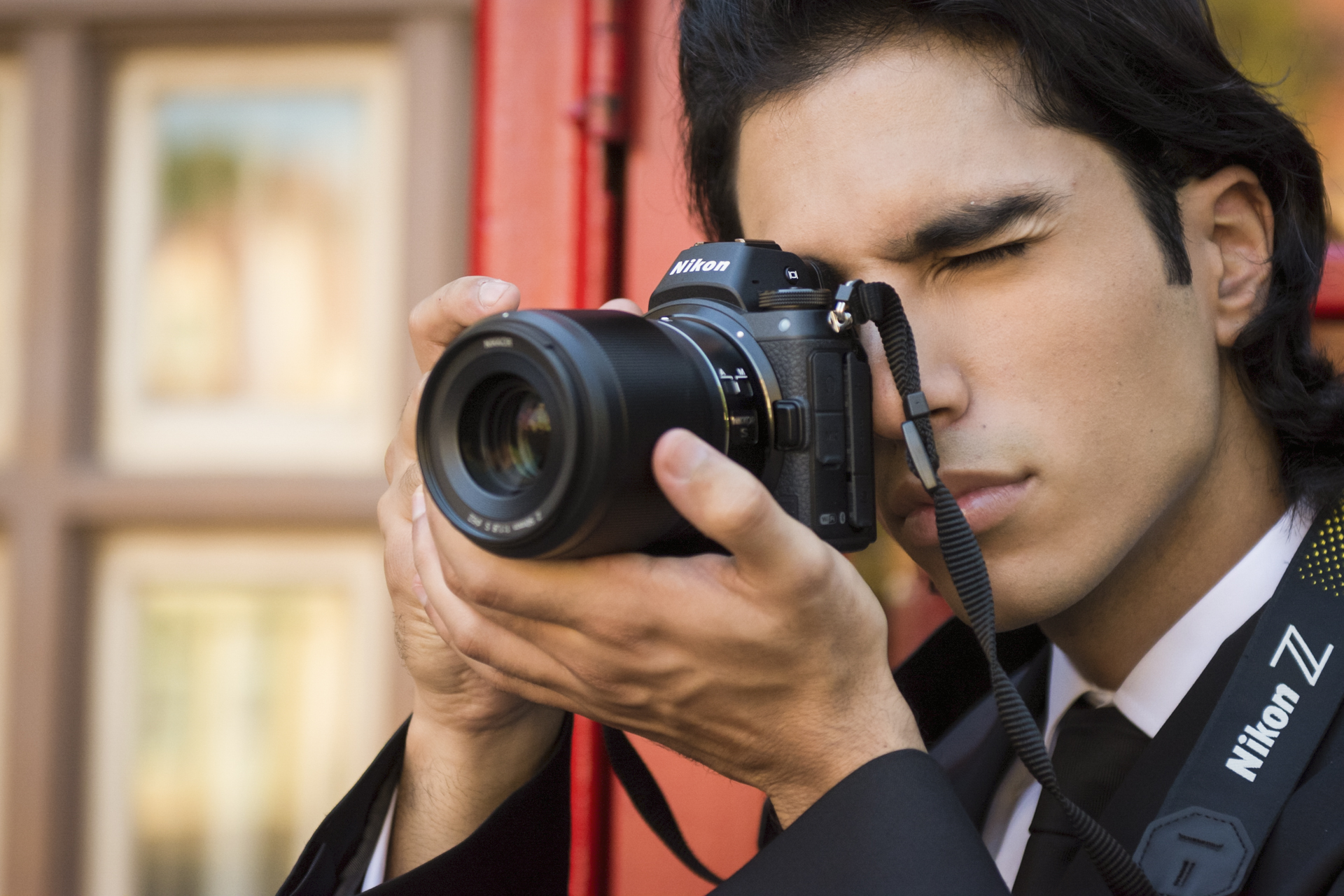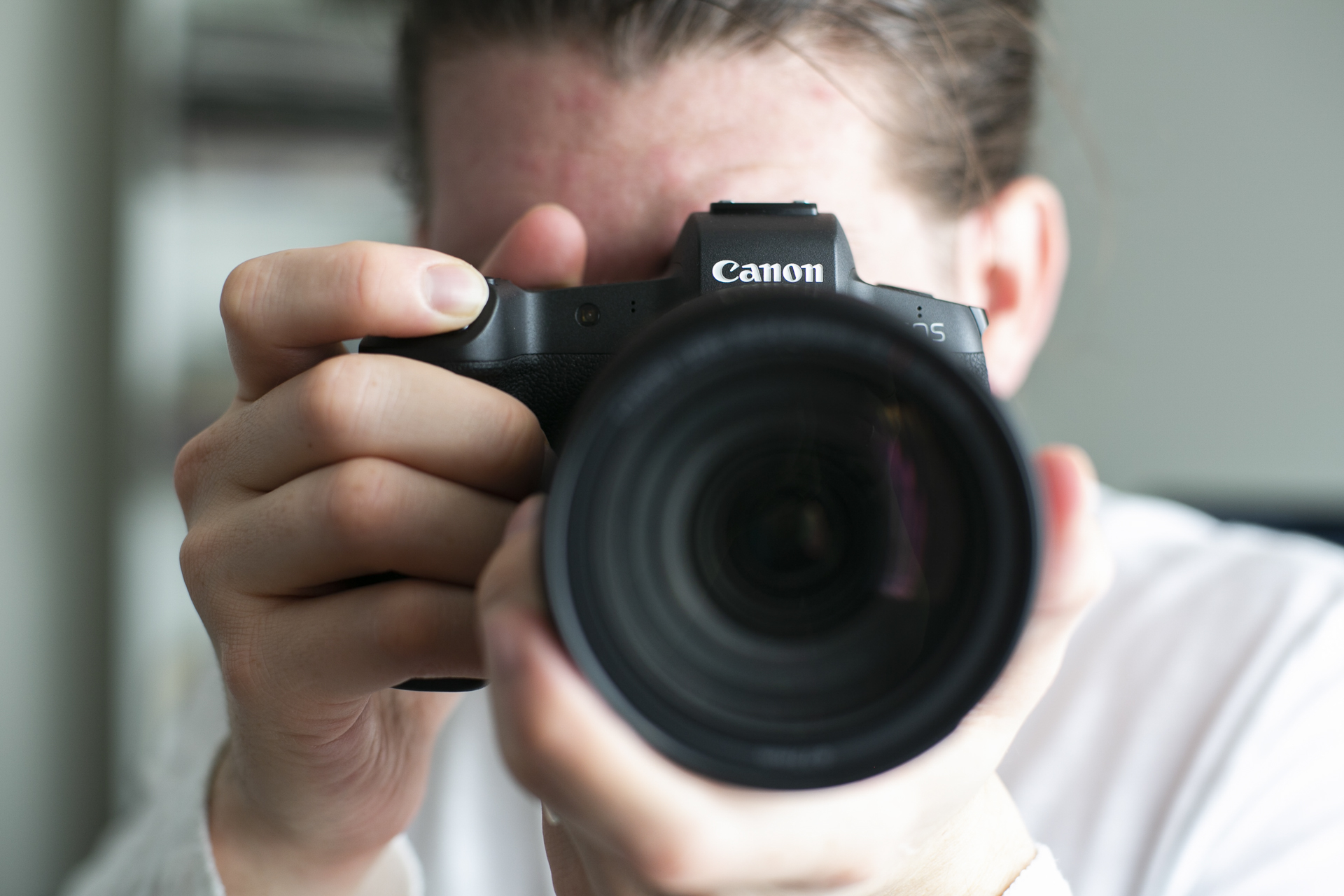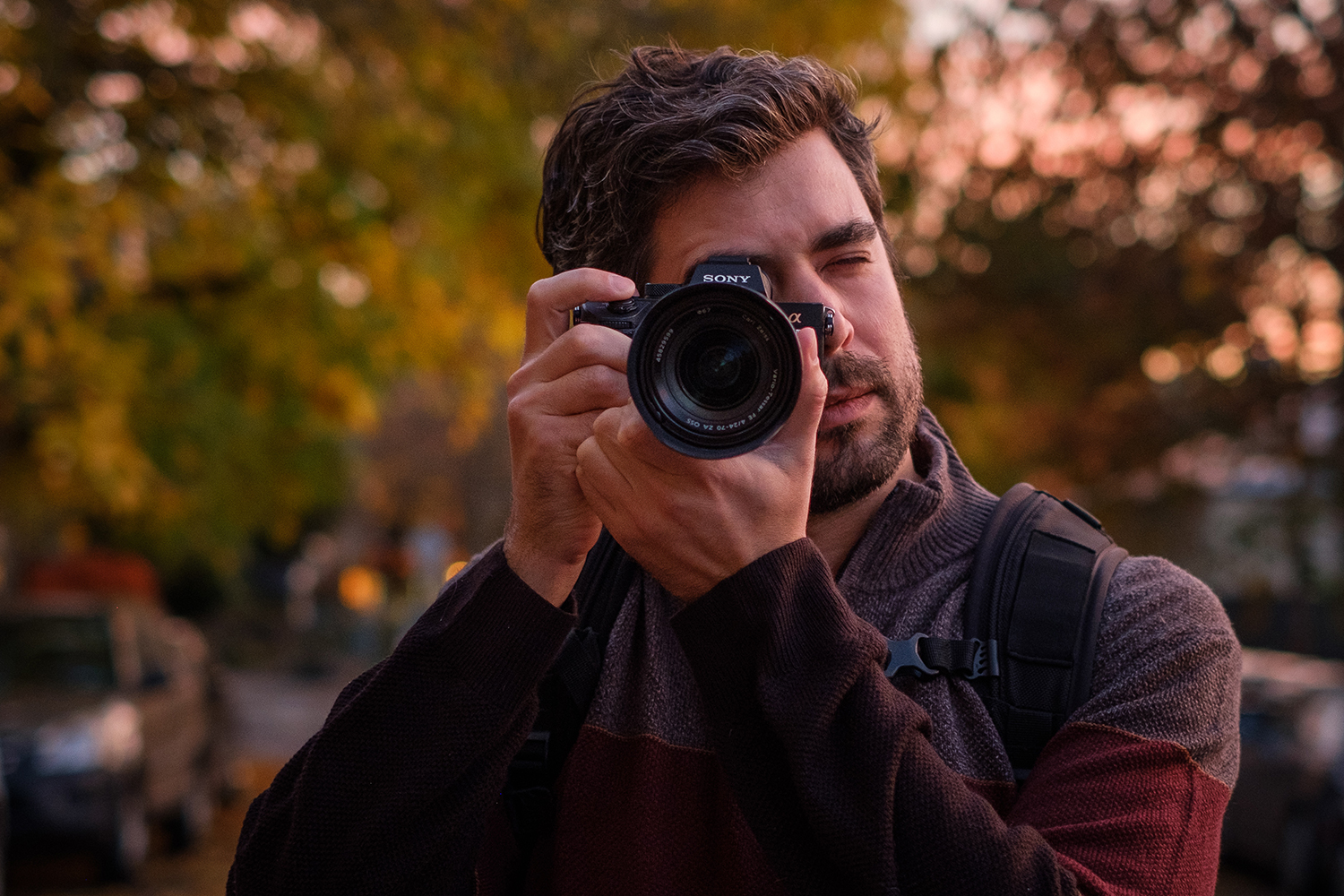A year ago, choosing a full-frame mirrorless camera was a matter of choosing which Sony you wanted (unless, of course, you could afford a Leica). But with major DSLR players Canon and Nikon now stepping into the full-frame mirrorless game, photographers looking for a smaller camera to sling around their neck without sacrificing image quality now have several options to choose from. The new Nikon Z6 and Canon EOS R, alongside the third generation Sony A7 III, are the most “basic” options of the bunch. The term basic is a loose one since all three are full-featured cameras — they just don’t have as much brute force as their big siblings in the 45-megapixel range like the Sony A7R III or Nikon Z7.
So how do the new Canon EOS R and Nikon Z6 compare to Sony’s third-generation A7 camera? While we have yet to review the Canon and Nikon, we’ve pored over spec sheets to pit the cameras against each other. The EOS R isn’t expected until October and the Z6 in November, but here’s how the cameras compare on paper.
| Sony A7 III
|
Nikon Z 6
|
Canon EOS R
|
|
| Sensor | 24.2 megapixel full-frame CMOS sensor with optical low pass filter | 24.5 megapixel full-frame CMOS with optical low pass filter | 30.3 megapixel full-frame CMOS with optical low pass filter |
| Burst Speed | 10 fps with continuous autofocus or 8 fps with live view | 12 fps in extended mode or 5.5 fps with live view | 8 fps or 5 fps with continuous AF |
| Shutter Speed | 30 sec. to 1/8000, bulb | 30 sec. to 1/8000, bulb | 30 sec. to 1/8000, bulb |
| ISO | 100-51,200 (50-204,800 extended) | 100 – 51,2000 (50 – 204,800 extended) | 100 – 40,000 |
| Autofocus | 693-point hybrid phase-detection contrast AF, Eye AF | 273-point hybrid phase-detection contrast AF | 5,655-point Dual Pixel autofocus, eye-detection AF |
| Image Stabilization | 5-axis sensor shift | 5-axis sensor shift | None, available in some lenses |
| Video | 4K at 30 fps, 1080p at 120 fps | 4K at 30 fps, 1080p at 120 fps | 4K at 30 fps, 1080p at 60 fps |
| EVF | 0.5-inch 2.35 million dot EVF with .91 inch eye point | 0.5-inch 3.69 million dot EVF with 21mm eye point | 0.5-inch 3.69 million dot EVF with 23mm eye point |
| LCD | 2.95 inch, 921,00 dot tilting touchscreen | 3.2 inch, 2.10 million dot tilting touchscreen | 3.15 inch, 2.10 million dots tilting touchscreen |
| Media Slots | Dual card slots (1 SD, 1 Memory Stick Duo or SD) | Single XQD card slot | Single SD card slot |
| Battery | 610 shots | 310 shots | 330 shots |
| Dimensions (WxHxD) | 5 x 3.87 x 3 inches | 5.3 x 4 x 2.7 inches | 5.35 x 3.87 x 3.32 inches |
| Weight | 1.43 lbs. (battery and memory card included) | 1.29 lbs. (body only) | 1.28 lbs. (body only) |
| Price | $2,000 | $2,000 | $2,299 |
| Read more | Sony A7 III review | Nikon Z 6 Review | Canon EOS Review |
| Buy Now | B&H Photo |
Sensor
On paper, the difference between the full frame sensors is a matter of a few megapixels. Both the Sony and the Nikon have virtually the same resolution, with Sony at 24.2 and Nikon at 24.5. The Canon offers 30.3 megapixels, but that equates to only a minor real-world difference. All three use an optical low pass filter and all three are the same physical size. While there are likely subtle differences in image quality coming from all three, we found each shot great images in our reviews. The Sony and Nikon look to have a slight edge at high ISO settings, but it’s really difficult to pick a clear winner here.
Winner: Too close to call
- 1. Shot on Sony A7 III
- 2. Shot on Nikon Z 6
- 3. Shot on Canon EOS R
Speed
The Z6 takes the top spot here with its 12-frames-per-second burst shooting, but note that this is in “extended” mode — impressively, this still allows for continuous autofocus, but the viewfinder won’t keep up with live view and the exposure is locked on the first frame. The Z6’s burst speed without those limitations is only 5.5 fps, which is a bit slower than the A7 III’s 8. Canon’s burst speed is 5 fps if you want continuous autofocus or 8 fps with the focus locked on the first frame, which would seem to put it in last place. Sony doesn’t have as much fine print with the A7 III’s burst speeds. It offers 10 fps with continuous autofocus, but drops to 8 with live view.
Winner: Nikon Z 6
Autofocus
Canon’s sensor has another perk — Dual Pixel autofocus (DPAF). The autofocus system uses more of the sensor, and has some 5,655 autofocus points in total. DPAF has been well-received on Canon’s DSLRs and EOS M mirrorless cameras, and this is the most advanced version we’ve seen to date. Both Sony and Nikon use hybrid phase-detection and contrast detection, but Sony has a lot more autofocus points, advanced subject recognition based on artificial intelligence, and the experience that comes from making three generations of A7 cameras.
The autofocus in the A7 III is the same one from the speedy, and much more expensive, A9, and we found it both quick and accurate. Nikon’s system, its first on-chip phase-detection autofocus, performed admirably in our tests and has since received an eye-detection update that makes it easier to achieve critical focus for portraits and brings it closer to parity with Sony. Canon also has eye-detection AF, although again without the more advanced AI features of Sony.
Winner: Sony A7 III
Stabilization
Canon and Nikon introduced lens-based optical image stabilization years ago, but mirrorless cameras have tended to favor sensor-based stabilization. Sony uses an impressive 5-axis stabilization system in the A7 III that’s good for 5 stops of shake reduction, allowing you to shoot at significantly slower shutter speeds and still achieve sharp results. Nikon has followed suit with its own 5-axis system in the Z6, also rated at 5 stops of shake reduction. Both cameras performed very well in our tests.
Canon is the odd person out here, as it chose to stick with the lens-based stabilization, avoiding sensor-shift stabilization entirely in the EOS R. While many of Canon’s new RF lenses are stabilized, not all of them are. What’s more, sensor stabilization is generally effective on more axes and can combine with lens stabilization for even better results, giving Nikon and Sony the clear edge here.
Winner: Sony A7 II and Nikon Z 6
Video
This is an interesting one. While Canon and Sony have a much longer history of making video cameras, it’s actually the Nikon Z 6 that can achieve the best video quality in this group. All three cameras can shoot 4K video, but only the Nikon allows for 10-bit output (the others are both 8-bit). A future firmware update will also unlock RAW video output, a first for a hybrid camera. Both 10-bit and RAW video will require an external recorder, which isn’t for everyone, but those are features not offered by the other two cameras.
When it comes to internal video recording, the cameras are more similar. The Sony A7 III offers the most control over the image, so if you can’t use an external recorder, it may be the better choice. As for the EOS R, it takes last place due to its extreme crop in 4K mode and significant rolling shutter distortion that makes it all but unusable for handheld shooting. As it lacks in-body stabilization, that’s another knock against it when it comes to video.
Winner: Sony A7 III and Nikon Z 6
Design
Sony has been designing full-frame mirrorless bodies for years, but Nikon and Canon are trying to bring some of their experience from DSLRs to their new mirrorless options. All three have decent electronic viewfinders and tilting touchscreens, but both are higher resolution on the Z 6 and EOS R. We rather like the fact that the Nikon Z 6 and Canon EOS R have a second screen at the top to display all the vital shooting details, much like their DSLR cousins. The Z 6 and EOS R also have a substantial grip, a truce flag waved to the DSLR users that don’t always agree that smaller is better.
- 1. Sony A7 III
- 2. Nikon Z 6
- 3. Canon EOS R
Canon deserves kudos for originality too — the R mount lenses have another control ring that can be set to control settings like aperture or ISO. But Sony’s experience shows — the A7 III has the smallest dimensions of the bunch and yet still manages to include dual media slots, a feature that already some professionals are saying disqualifies the Nikon and Canon mirrorless cameras, which only have one slot. Here, the design comes down to whether a robust grip, dual card slots, or a top LCD screen is more vital to you.
Winner: Too close to call
Battery life
The first-generation Sony mirrorless cameras were, well, pathetic when it came to battery life. In general, mirrorless cameras drain power more quickly than DSLRs due to their electronic viewfinders. Sony has more than doubled battery life in the A7 III, however, pushing into DSLR territory. It comes out the clear winner here, with a rating of more than 600 exposures per charge. The Nikon and Canon have almost half the battery life at a little over 300 shots per charge.
However, real-world performance is often much better than CIPA ratings, so any camera should get you through an average day of shooting. Still, there’s no denying that Sony is the clear victor here.
Winner: Sony A7 III
Is there a clear winner?
Sony’s first full-frame mirrorless camera, the A7, launched in 2013 and easily earned our 2013 camera of the year title. Sony has since made huge improvements across the board to everything from the autofocus to video features to battery life. Whereas Canon and Nikon were afraid of what a full-frame mirrorless camera would do to DSLR sales, Sony had nothing to lose — and that attitude has lead to an excellent camera series that has been readily adopted by enthusiasts and professionals alike.
Nikon and Canon are five years late to the party, but they have made a grand entrance. Nikon gave us its first sensor-based image stabilization, on-chip phase detection AF, and 10-bit 4K video. Canon borrowed heavily from the 5D Mark IV’s tried-and-true wardrobe, but added its own flair with a revamped DPAF system. Both Nikon and Canon will let photographers use existing DSLR lenses via adapters, but Sony obviously has the most native mirrorless lenses available at this time.
The truth is, any of these cameras could come out on top depending on what you need and how you shoot, but we have to learn a little toward the Sony and Nikon for their in-body stabilization systems, faster continuous shooting speeds, and better video modes. The EOS R is also the most expensive of the group, with an MSRP $300 higher than the other two, but it’s not a huge difference and prices have fluctuated quite a bit since the cameras were first introduced.















